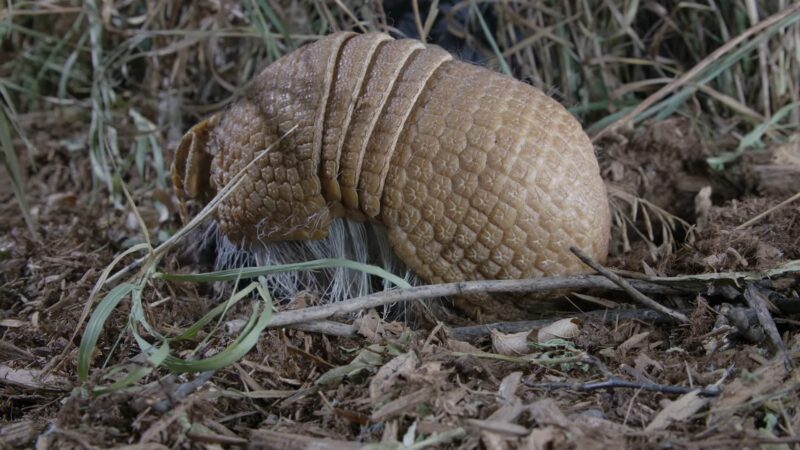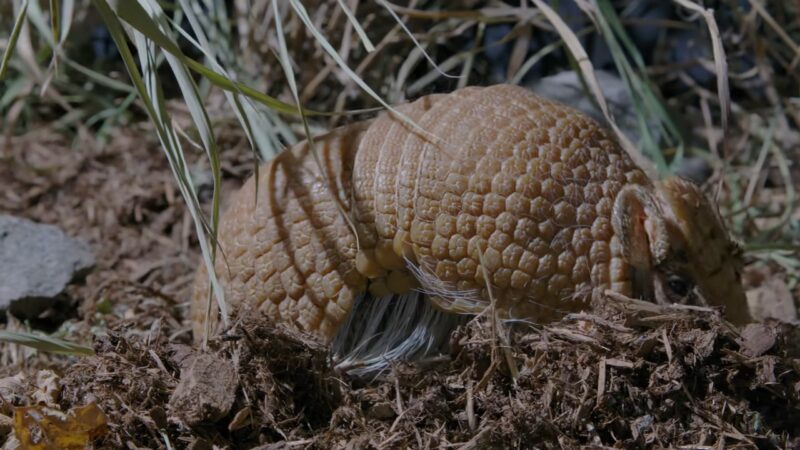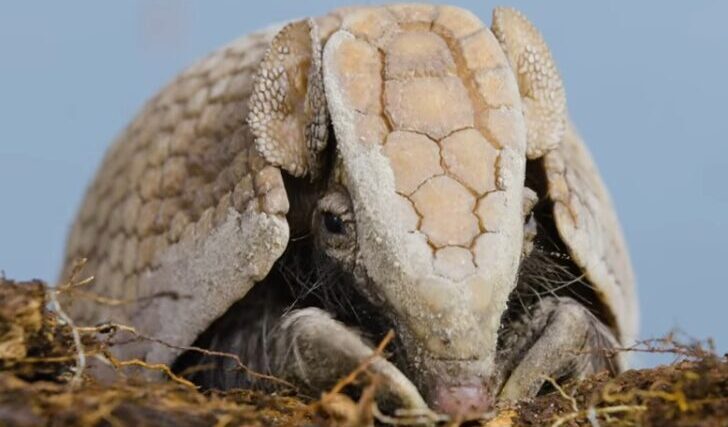Hey there, Nature Enthusiasts! 🌿👀 Get ready to embark on an amazing journey into the world of armadillos! 🌍🦔
These extraordinary creatures, known for their peculiar and charming appearance, are so much more than meets the eye. Especially when it comes to their most famous feature – the shell! 🐢✨
In this exciting exploration, we’re looking deep into eight fascinating facts about the armadillo shell that will surely amaze you. So, buckle up and prepare to be wowed by the wonders of these quirky little animals! 🚀🤓
Key Takeaways
- Evolutionary Marvel: The shell is a result of millions of years of evolution, adapting to various environments. 🌍
- Complex Composition: Made of bone and keratin, providing protection and flexibility. 🛡️
- Species Variability: Different species have shells with varying colors, sizes, and band numbers. 🎨
- Sensory Capability: Armadillos can feel through their shells, aiding in environmental awareness. 🌱
- Influences Behavior: The shell impacts armadillo behaviors like foraging and defense. 🌳
- Limitations and Adaptations: While protective, the shell also limits mobility and presents vulnerabilities. 🏞️
- Conservation Importance: Human activities impact armadillos, stressing the need for protective measures. 🏺
- Multifunctional Shell: Beyond protection, it aids in temperature regulation, burrowing, social interactions, and predator deterrence. 🌡️🎭
Temperature Regulation

Armadillos use their shells as a means of temperature regulation. The shell’s surface reflects sunlight and heat, helping the armadillo manage its body temperature in warmer climates.
In cooler environments, the shell can act as an insulator, trapping body heat. This adaptability is crucial for armadillos as they inhabit a range of environments from rainforests to grasslands.
Water Repellency
The armadillo shell has water-repellent properties. The keratin layer of the scutes provides a barrier against moisture, which is particularly beneficial during heavy rains or when the armadillo has to wade through water.
This feature helps keep the armadillo dry and reduces the risk of skin infections or other ailments caused by prolonged exposure to moisture.
Impact on Burrowing

Armadillos are known for their burrowing habits, and their shell plays a significant role in this behavior. The shell’s structure, especially around the shoulders and hips, provides strength and support during digging.
The edges of the scutes can act like a shovel, helping the armadillo to efficiently move soil. This adaptation is vital for creating shelters and foraging for food underground.
Social Significance of the Shell
The shell of an armadillo can also have social significance among armadillo populations. During mating rituals or territorial disputes, armadillos may use their shells as a display of strength or dominance.
The condition and size of a shell can be a factor in these interactions, influencing mating success and social hierarchy within groups.
Shedding and Repair

Unlike reptiles that shed their skin, armadillos do not shed their shells. However, they do undergo a process of repair and regeneration.
If a scute is damaged, the underlying bone can regenerate, and new keratin layers can form over time. This ability to repair the shell is crucial for the armadillo’s long-term survival, especially after encounters with predators or environmental hazards.
| Aspect | Description |
|---|---|
| Shedding | Armadillos do not shed their shells like reptiles shed their skin. |
| Repair and Regeneration | Damaged scutes can regenerate with new bone and keratin layers forming over time. |
| Material | The shell, like in turtles, is made of bone covered with keratin layers. |
| Process | If a scute is damaged, the underlying bone regenerates and new keratin layers form. |
| Importance | This repair process is crucial for survival, particularly after predator attacks or environmental hazards. |
Influence on Locomotion
The armadillo shell influences the animal’s locomotion in various ways. Its weight and distribution affect the armadillo’s center of gravity, impacting how they walk, run, or swim.
The shell’s rigidity provides a certain level of stability, but it also limits the flexibility of the spine. This unique combination of protection and mobility reflects the armadillo’s adaptation to its environment.
Predator Deterrence
Lastly, the shell serves as a primary means of predator deterrence. Its hard, bony structure can protect the armadillo from the bites and claws of predators.
In some species, like the three-banded armadillo, the ability to roll into a nearly impenetrable ball is a direct adaptation against predation. This defense mechanism highlights the shell’s crucial role in the armadillo’s survival strategy.
FAQs

Can armadillos feel pain through their shell?
Yes, armadillos can feel pain through their shell. While the shell is made of bone and keratin, it is connected to the rest of the body by a layer of skin and nerves. These nerves can transmit pain sensations, so an armadillo can feel if its shell is damaged or if it experiences a strong impact.
How do armadillos maintain their shell?
Armadillos maintain their shell through regular grooming and by growing new layers. They often roll in the mud, which helps to clean and maintain the health of the shell. Additionally, as they grow, new layers of keratin are added to the scutes, ensuring that the shell remains strong and protective.
Are there any armadillo species without a shell?
No, all species of armadillos have some form of a shell. The shell is a defining characteristic of armadillos, although the size, shape, and number of bands can vary significantly among different species.
Do armadillo shells change color over time?
The color of an armadillo’s shell can change slightly over time due to age, environmental factors, and wear. Younger armadillos often have softer, lighter-colored shells that darken and harden as they mature. Additionally, exposure to the sun and elements can cause the shell’s color to fade or change.
Can an armadillo’s shell heal if it’s damaged?
Yes, to some extent, an armadillo’s shell can heal if it’s damaged. The bone underneath the keratin layer can repair itself, similar to how human bones heal. However, severe damage to the shell may not fully regenerate, especially if the keratin layer is extensively harmed.
How does the armadillo’s shell affect its ability to regulate body temperature?
The armadillo’s shell can impact its ability to regulate body temperature. The shell acts as a barrier to direct sunlight, helping to prevent overheating. However, because it’s not as efficient at releasing heat, armadillos may need to seek shade or burrow underground to cool down in high temperatures. Conversely, in cooler environments, the shell provides some insulation, retaining body heat.
Conservation and Human Impact
The armadillo shell has also been a factor in human interactions with these animals. In some cultures, armadillo shells have been used as musical instruments or decorative items.
However, this has sometimes led to overhunting and a decline in armadillo populations. Conservation efforts are crucial to protect armadillos, especially in areas where their habitat is being destroyed.
Understanding the importance of the shell and its role in armadillo survival can help in developing effective conservation strategies.
Final Words
Wow, what a journey it’s been! 🌟🚀 We’ve unearthed some truly fascinating insights about the armadillo’s shell, from its evolutionary history to its role in armadillo behavior and survival. 🌍🦔
These creatures are so much more than their hard exterior; they’re a testament to the incredible adaptability and diversity of life on our planet. 🌿🌏 So, the next time you spot an armadillo, remember there’s a whole world of wonders hiding beneath that unique shell! 🐾🔍
Keep exploring and stay curious, nature lovers! 🌈🔬💕








